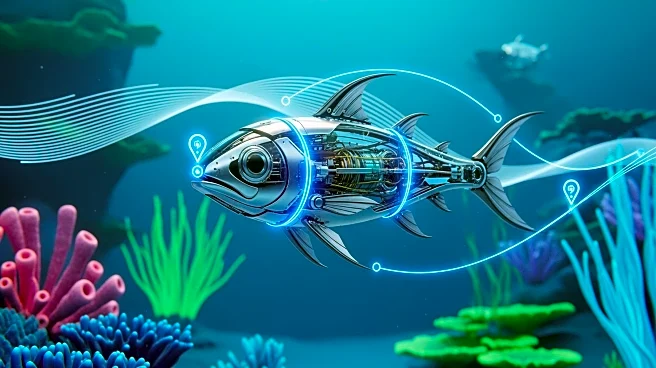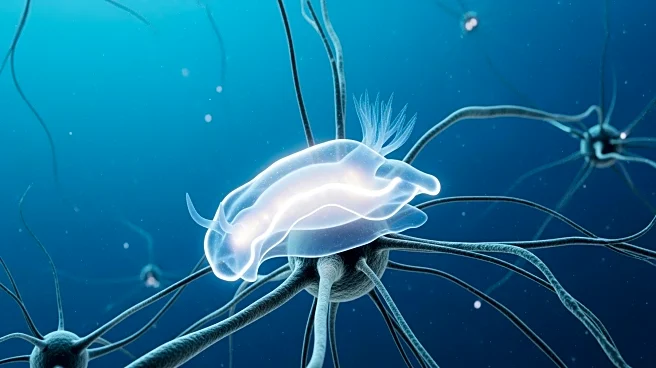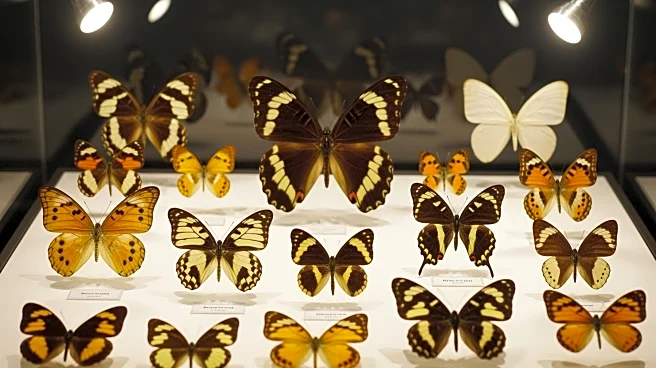What's Happening?
Researchers from EPFL and Duke University have successfully reverse-engineered the neural circuitry of zebrafish to understand how they navigate their environment. By using simulations, robots, and live
fish, the team replicated the fish's ability to react to visual stimuli and maintain position in flowing water. This study provides insights into how brain circuits, body mechanics, and environmental factors interact to control behavior.
Why It's Important?
This research is significant for the field of robotics and neuroscience as it demonstrates the potential of bioinspired designs to enhance robotic systems. Understanding the sensorimotor coordination of zebrafish can lead to advancements in developing robots that can navigate complex environments autonomously. The study also contributes to the broader understanding of how animals interact with their environments, which can inform the design of more efficient and adaptive robotic systems.
What's Next?
The BioRobotics Lab plans to extend this research to study zebrafish swimming patterns further. The open-source tools developed from this study will be available for other researchers to explore visuomotor coordination in various species. This work may lead to new applications in robotics, particularly in areas requiring precise navigation and environmental interaction, such as underwater exploration and search-and-rescue missions.











